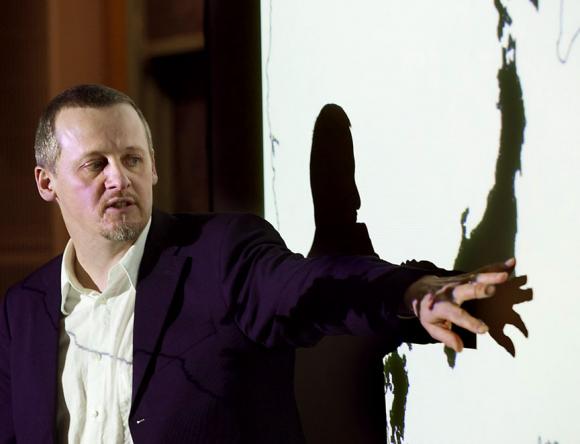On Tuesday, a panel of faculty experts explained in detail the scale and scientific underpinnings of the earthquake and tsunami that struck Japan, as well as the threat to nuclear reactors arising from the still-unfolding disaster.
Kerry Smith, associate professor of East Asian studies, organized the forum. Using estimates obtained from local police agencies and the media, Smith said the twin disaster on March 11 had killed 8,800 people, with more than 18,000 missing. More than 300,000 Japanese had been evacuated, he added, quoting the same sources. Those numbers, Smith told the roughly 65 faculty, students, media and the general public who attended the forum in MacMilllan Hall, are just the beginning of the story: The amount of coastline affected by the 9.0-magnitude earthquake and the tsunami would stretch from Maine to southern Virginia; water from the series of tidal waves spawned by the offshore quake reached as far as 10 miles inland.
“If you think about something like this happening in the United States,” Smith said, “you’d have a sobering sense of the dimensions of this disaster.”
Terry Tullis, an earthquake expert and professor of geological sciences emeritus, presented a series of slides that showed how the quake happened and the geological wreckage it left. The quake, the fourth-largest in recorded history, was preceded by a series of foreshocks, some of which registered as high as 7.0 magnitude, Tullis said as he showed a video on which the location of each foreshock appeared on the screen as he talked. The Japanese are used to such seismic activity, he noted, so it was unreasonable to suggest that officials should have known that the foreshocks would lead to a single, super-powerful quake, although better tsunami defenses could have been built.
Next up was Karen Fischer, professor of geological sciences, who talked about the tsunami. What made the tsunami so devastating, Fischer said, was not the initial boil in the ocean caused by the earthquake, but the long distance over which that initial wave spread. By the time that wave (and subsequent waves) reached shore, hundreds of miles of ocean had been compressed into a much smaller and shallower area. “It was a huge volume of water,” she said.
The other factor in the tsunami’s wrenching impact was that it reached shore in about 15 minutes. Japanese emergency management officials acted quickly, issuing a tsunami warning three minutes after the earthquake. Still, that left only 12 minutes for residents to scramble to safety.
“Simply put, it’s just very difficult when you have an earthquake near a shoreline ... to get a warning out in time,” Fischer said.
George Seidel, professor of physics emeritus, told the audience that the radioactive threat posed by the most troubled reactors in the Fukushima Daiichi complex, came about because the tsunami knocked out electrical power and backup diesel power. Without power, he said, the fuel rods could not be cooled and the complex could not be brought under control. While the consequences have been serious, Seidel sought to add a dose of perspective: The number of people affected by the troubled reactors is in the dozens, while those affected by the natural disasters has reached at least the tens of thousands. “On a scale of things, [the impact from the damaged reactors] is minimal compared to what happened with the earthquake and tsunami,” said Seidel, who taught a nuclear energy course for years at Brown.

